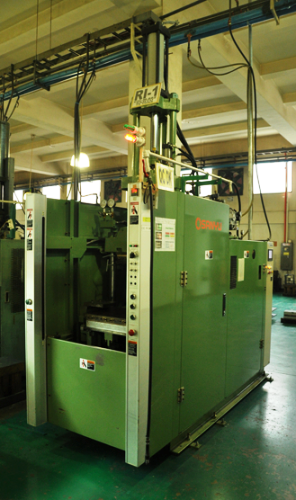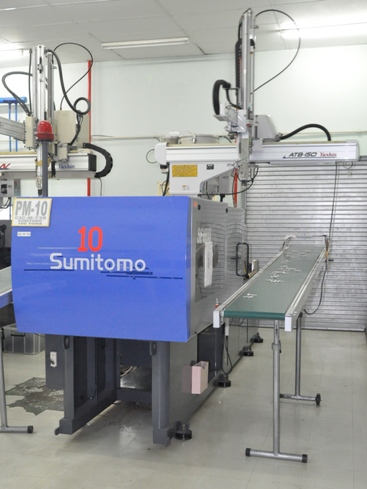


Injection moulding uses a special-purpose machine that has three parts: the injection unit, the mould and the clamp. Parts to be injection-moulded must be very carefully designed to facilitate the moulding process; the material used for the part, the desired shape and features of the part, the material of the mould, and the properties of the moulding machine must all be taken into account. The versatility of injection moulding is facilitated by this breadth of design considerations and possibilities.
/CP Automatic.jpg)
Compression molding is a method of molding in which the molding material, generally preheated, is first placed in an open, heated mold cavity. The mold is closed with a top force or plug member, pressure is applied to force the material into contact with all mold areas, while heat and pressure are maintained until the molding material has cured; this process is also known as 'Vulcanisation'.[1] The process employs thermosetting resins in a partially cured stage, either in the form of granules, putty-like masses, or preforms.

Plastic Molding is a nitrided screw and barrel with long service life Smelted screw with big L/D ratio to the result of high quality plasticizing and color-fixing. Double injection cylinder device featured compact construction and good equilibrant. Transducer control injection stroke The speed of low speed and large torque hydraulic motor can be freely adjusted. Screw back pressure control and nozzle anti-leakage control Movable hopper for easy remove material Injection carriage can be generally used with the function of slacking, re-feeding or fixed-feeding Many steps speed and pressure of injecting and holding are controlled by time or position or both Equipped with reverse device to be easily removed and cleaned